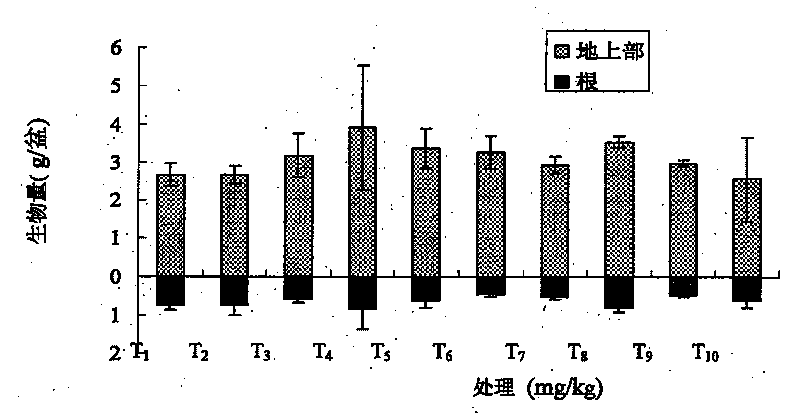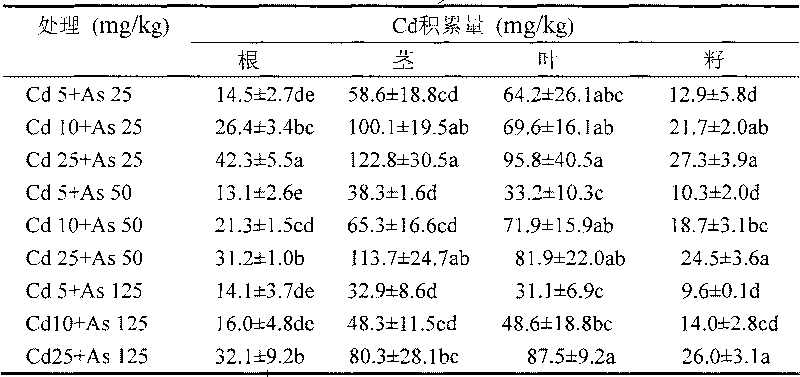Method for repairing cadmium-arsenic polluted soil by utilizing bidens pilosa
A cloverleaf and compound pollution technology, applied in the field of phytoremediation of polluted environments, can solve problems such as slow research progress and limited rejection plants, and achieve the effects of strong operability, repairing cadmium pollution, and not causing secondary pollution
- Summary
- Abstract
- Description
- Claims
- Application Information
AI Technical Summary
Problems solved by technology
Method used
Image
Examples
Embodiment Construction
[0013] The growth response of P. trifoliate under pollution conditions and the characteristics of arsenic absorption and accumulation are further explained in the following figure as a cadmium hyperaccumulator and arsenic rejection plant, which has certain utilization value for the control of arsenic pollution.
[0014]The test site is located in the Shenyang Ecological Experiment Station of the Chinese Academy of Sciences. The geographical location is 123°41′ east longitude, 41°31′ north latitude, and the altitude is about 50m. -164d, the annual precipitation is 650-700mm. The potting test soil was collected from the top soil (0-20cm) of the station. The soil type was meadow brown soil. Its physical and chemical properties were pH 6.56, organic matter 12.26g / kg, total N 0.91g / kg, total P 0.4g / kg, Total K 183g / kg, total Cd 0.17mg / kg, total Cu 32.9mg / kg, total Zn 28.1mg / kg, total Pb 11.1mg / kg, total As 2.1mg / kg.
[0015] After the test soil is air-dried and passed through a 4m...
PUM
 Login to View More
Login to View More Abstract
Description
Claims
Application Information
 Login to View More
Login to View More - R&D
- Intellectual Property
- Life Sciences
- Materials
- Tech Scout
- Unparalleled Data Quality
- Higher Quality Content
- 60% Fewer Hallucinations
Browse by: Latest US Patents, China's latest patents, Technical Efficacy Thesaurus, Application Domain, Technology Topic, Popular Technical Reports.
© 2025 PatSnap. All rights reserved.Legal|Privacy policy|Modern Slavery Act Transparency Statement|Sitemap|About US| Contact US: help@patsnap.com



